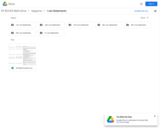
K-8 I Can Statements
- Subject:
- Mathematics
- Material Type:
- Activity/Lab
- Author:
- Liberty Public Schools
- Date Added:
- 04/07/2021
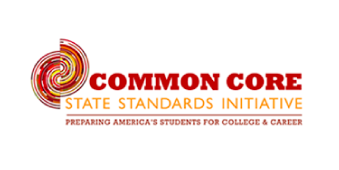

K-8 I Can Statements
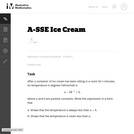
This task illustrates the process of rearranging the terms of an expression to reveal different aspects about the quantity it represents, precisely the language being used in standard A-SSE.B.3.

This rich task is an excellent example of geometric concepts in a modeling situation and is accessible to all students. In this task, students will provide a sketch of a paper ice cream cone wrapper, use the sketch to develop a formula for the surface area of the wrapper, and estimate the maximum number of wrappers that could be cut from a rectangular piece of paper.
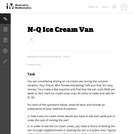
The purpose of this task is to engage students, probably working in groups, in a substantial and open-ended modeling problem. Students will have to brainstorm or research several relevant quantities, and incorporate these values into their solutions.

Students examine how the power output of a photovoltaic (PV) solar panel is affected by temperature changes. Using a 100-watt lamp and a small PV panel connected to a digital multimeter, teams vary the temperature of the panel and record the resulting voltage output. They plot the panel's power output and calculate the panel's temperature coefficient.
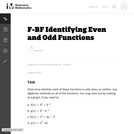
In this task students use algebraic methods to determine whether each of the functions is odd, even, or neither.
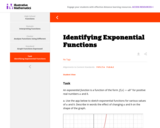
The task is an introduction to the graphing of exponential functions. The first part asks students to use technology to experiment with the two parameters defining an exponential function, with little guidance. Since it is important for the second part, teachers should encourage students to try a wide range of values, and in particular, values of b both less than and greater than 1. The task includes a Desmos app, in which students can make use of sliders to more viscerally see the effect of changing a and b separately.
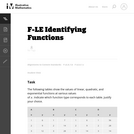
This task emphasizes the expectation that students know linear functions grow by constant differences over equal intervals and exponential functions grow by constant factors over equal intervals.
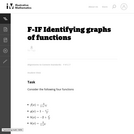
The goal of this task is to get students to focus on the shape of the graph of the equation y=ex and how this changes depending on the sign of the exponent and on whether the exponential is in the numerator or denominator. It is also intended to develop familiarity, in the case of f and k, with the functions which are used in logistic growth models, further examined in ``Logistic Growth Model, Explicit Case'' and ``Logistic Growth Model, Abstract Verson.''
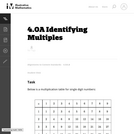
The goal of this task is to work on finding multiples of some whole numbers.
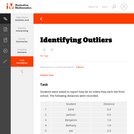
This is a task from the Illustrative Mathematics website that is one part of a complete illustration of the standard to which it is aligned. Each task has at least one solution and some commentary that addresses important aspects of the task and its potential use.
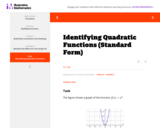
This task has students explore the relationship between the three parameters a, b, and c in the equation f(x)=ax2+bx+c and the resulting graph. There are many possible approaches to solving each part of this problem, especially the first part. We outline some of them here (which overlap heavily in places), applied to the top left graph, and then only give the final answers in the solution provided.
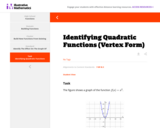
This task has students explore the relationship between the three parameters a, h, and k in the equation f(x)=a(x−h)2+k and the resulting graph. There are many possible approaches to solving each part of this problem, especially the first part. We outline some of them here (which overlap heavily in places), applied to the top left graph, and then only give the final answers in the solution provided.

This task requires students to determine whether a number is rational or irrational. The task assumes that students are able to express a given repeating decimal as a fraction.

This lesson unit is intended to help you assess how students reason about geometry and, in particular, how well they are able to: use facts about the angle sum and exterior angles of triangles to calculate missing angles; apply angle theorems to parallel lines cut by a transversal; interpret geometrical diagrams using mathematical properties to identify similarity of triangles.
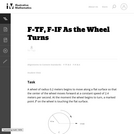
In this task, students use trigonometric functions to model the movement of a point around a wheel and, in the case of part (c), through space (F-TF.5). Students also interpret features of graphs in terms of the given real-world context (F-IF.4).
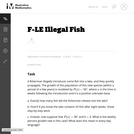
This is a direct task suitable for the early stages of learning about exponential functions. Students interpret the relevant parameters in terms of the real-world context and describe exponential growth.
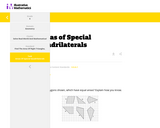
This task asks students to identify which of the six polygons have the same area. Students may complete the task using a variety of techniques including decomposing shapes, using transformations (rotations, reflections, translations) to move one or more parts of the figure to another part to more easily calculate the area, enclosing the polygon inside a larger rectangle and then subtract the areas of the "extra" pieces, etc.
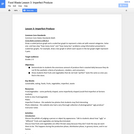
Objectives
-Demonstrate to students the enormous amount of produce that is wasted daily because they do not fit the aesthetic criteria of producers, retailers, and consumers.
-Show students that fruits and vegetables that do not look “perfect” taste the same as ones you find in the store.
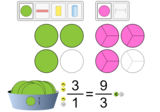
Build equivalent fractions with different denominators. Match shapes and numbers to earn stars in the game. Challenge yourself on any level you like. Try to collect lots of stars!